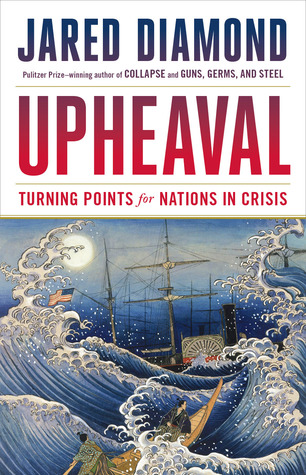More on this book
Community
Kindle Notes & Highlights
It’s not enough to be an American citizen eligible to vote by virtue of being over 18 years old, and not in prison or a convicted ex-felon: one still has to register to vote. The U.S. has had a long history of preventing whole groups of age-eligible citizens from registering. The largest such group was American women, who could not vote until 1919. Other groups, notably African-Americans, plus other minorities and immigrant groups, were prevented from registering by obstacles such as poll taxes, literacy tests, and “grandfather clauses.” (I.e., you can’t register to vote if your grandfather
...more
in the state of Florida in the year 2000 about 100,000 potential voters, the vast majority of them Democrats, were pruned off the list of registered voters. That pruning had an enormous effect on tipping the Florida 2000 presidential vote, hence the U.S. presidency, to George Bush over Al Gore—a much greater effect than did the subsequent well-publicized arguments over disqualifying mere hundreds of so-called chad ballots to which the election’s outcome is commonly misattributed. The
All of these selective obstacles contribute to the fact that voter turnout is over 80% for Americans with incomes exceeding $150,000, but under 50% for Americans with incomes under $20,000. Those obstacles thereby influence the outcome not only of U.S. presidential elections, but also of many close congressional, state, and local election contests every year.
Some of those measures of rising American economic inequality have now become frequently quoted and widely familiar. For instance, the share of unadjusted national income earned by the richest 1% of Americans rose from less than 10% in the 1970’s to over 25% today. Inequality is rising even within the ranks of rich Americans themselves: the richest 1% of Americans have increased their incomes proportionately much more than the richest 5%; the richest 0.1% have done proportionately better than the richest 1%; and the three richest Americans (currently Jeff Bezos, Bill Gates, and Warren Buffett)
...more
The conclusion of such studies is that socio-economic mobility is lower, and family intergenerational correlations of incomes are higher, in the U.S. than in other major democracies. For instance, 42% of American sons whose fathers belong to the poorest 20% of their generation end up in the poorest 20% of their own generation, whereas only 8% of sons of those poorest fathers achieve rags to riches by ending up in the richest 20%. Corresponding percentages for Scandinavian countries are about 26% (below Americans’ 42%) and 13% (above Americans’ 8%).
The first steps for any nation in addressing any national crisis are to achieve a national consensus that one’s country really is entering a crisis (factor #1); to accept responsibility for one’s problems (factor #2), rather than blaming them on “others” (other countries or other groups within one’s own country); and to undertake an honest self-appraisal of what is and what isn’t working well (factor #7). The U.S. is still far from uniting around those first steps. While Americans are increasingly concerned about our country’s condition, we still have no national consensus about what’s wrong.
QUESTION: When will the U.S. take its problems seriously? ANSWER: When powerful rich Americans begin to feel physically unsafe. To that answer, I’d add: when powerful rich Americans realize that nothing they do will enable them to remain physically safe, if most other Americans remain angry, frustrated, and realistically without hope.
There are some optimists who claim that we can support a world with 9.5 billion people. But I haven’t met any optimist mad enough to claim that we can support a world with the equivalent of 80 billion people. Yet we promise developing countries that, if they will only adopt good policies, like honest government and free-market economies, they too can become like the First World today. That promise is utterly impossible, a cruel hoax. We are already having difficulty supporting a First World lifestyle even now, when only 1 billion people out of the world’s 7.5 billion people enjoy it.
In short, it’s certain that, within the lifetimes of most of us, per-capita consumption rates in the First World will be lower than they are now. The only question is whether we shall reach that outcome by planned methods of our choice, or by unpleasant methods not of our choice. It’s also certain that, within our lifetimes, per-capita consumption rates in many populous developing countries will no longer be a factor of 32 below First World consumption rates, but will be more nearly equal to First World consumption rates than is the case at present. Those trends are desirable goals, rather
...more


